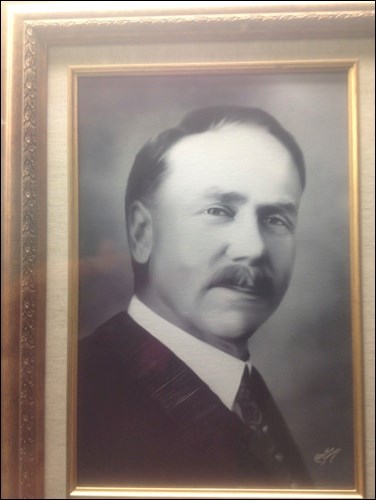��
Since its inception as a village on Aug. 27, 1905, North Battleford has been fortunate to have had 27 competent, fair-minded and hard-working mayors. Perhaps the most illustrious of these was John Gregory. In addition to his lengthy tenure as mayor (1907 – 1909; 1925 – 1928; 1932 – 1934), he served as an MLA, and MP. ��He was also a highly successful real estate businessman.
��
John Albert Gregory was born on Sept. 9, 1878 at Exeter, Ont. His father, Thomas Gregory, was principal of the town’s high school. After attending schools in Exeter, Goderich, and London, Mr. Gregory moved West in 1897 to study law, and to seek his fortune in the “land of opportunity.” His first employment was teaching high school in Yorkton. In 1905 he arrived in North Battleford by train. This was the end of the line for Gregory. It was a reflection of his keen business mind that he immediately noticed construction crews were fed in a large tent. It spurred him to build the Gregory Block on King Street that housed a large restaurant that catered to the working class. From here Gregory pursued his many successful business interests.��
On the death of North Battleford’s first mayor, R. F. Chisholm, Gregory entered municipal politics and became the town’s second mayor. His terms spanned 25 years.
North Battleford’s first eight years were characterized by phenomenal development – explosive growth and rapid progress on every front.��
Village status was conferred on the community on March 21, 1906. Four months later, on Aug. 15, 1906, the village became a town.��
North Battleford was recognized by the province as having qualified for city status a number of months before official city status was conferred on May 1, 1913, making it the fifth city in the province.��
The rapidity and magnitude of the new frontier community was extraordinary. In June of 1905, an agent for the Saskatchewan Land Company sold 200 lots in two hours. At about the same time, two large hotels were under construction. Hugh Maher was building a store, and the Battlefords Trading Company and a great many businesses were being constructed. For example, in 1912-13, The Saskatchewan Hospital, North Battleford Collegiate, Knox Presbyterian Church (now Third Avenue United), ��Auditorium, Sallows and Boyd Building, North Battleford Brick and Concrete Company, Cooper Hotel, the Armoury, Ruggles and Winteres Brick Plant, International Harvester Building, Millar Block, post office, Carnegie Library and Connaught School, and many large and expensive homes on both the west and east sides of the city were in various stages of construction all at the time.
��It was in this forward looking, confident and optimistic time that Gregory thrived and grew successful.
Despite these heady times, and despite many individual successes, by 1914, the great spending spree was over. The City of North Battleford owed $1,116,370 ��in debentures with a total city debt of $1,119,279. In 1922, the debenture debt was $1,067,284. The line held. The debt was finally paid off in the late 1950s.��
North Battleford struggled for many years to pay off the debt incurred during its first eight years as a city. During this time, many city workers were laid off. There were also plans for more borrowing – for a dam on the North Saskatchewan River. And, there were plans for another 10 government projects totaling $1,280,000 involving the Battlefords.
Gregory was first elected to the provincial legislature in 1934 as the Liberal member for the Battlefords. He resigned in 1940 and was successful in winning a seat as member of parliament for the Battlefords which he held until 1945. Failing health required him to retire from politics.��
In addition to his many accomplishments in business and politics, Gregory also served as president of the Saskatchewan Co-operative Creameries. He also sat on the Historic Sites and Monuments Board of Canada.
Gregory Park, named after Mayor Gregory, was bounded on the west, north and east of King Hill (the double highway south of the railway overpass cuts through the middle of what once was Gregory Park.) The park was renowned for its spectacular, panoramic view of the North Saskatchewan River Valley and for its extensive network of hewn stone walls (a make work project for unemployed men in the early years of the Great Depression). The park was renamed Coronation Park in 1936 to commemorate King George’s ascendancy to the British throne. Gregory Drive on the West side of the city is also named after Mayor Gregory.
The details on John Gregory’s personal life are sketchy (remarkably, the city has no record of its mayors, photographs and terms served only). �� Gregory and Ida C. Phillips were united in marriage on Aug. 1, 1905. There is no record of the Gregorys having children.
After a life of extraordinary accomplishment and service, Gregory died on Jan. 22, 1955 at the age of 80 years.��
(Source: Wikipedia; Harvey Cashmore)




